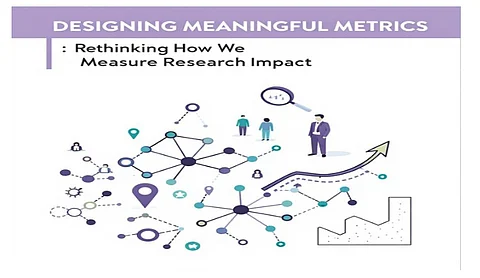

In this modern era, Ravinderjeet Dhillon, an experienced professional in platform strategy and product management, introduces a critical perspective on how research impact is assessed in the digital age. This article distills his ideas into an exploration of how innovation is reshaping research evaluation, with a special focus on designing metrics that actually matter.
Traditional metrics like citation counts and publication tallies have long dominated research evaluation. However, as research outputs diversify ranging from patents to policy briefs these legacy systems increasingly fall short. At the heart of the article lies the "Impact Pyramid," a hierarchical model that guides platforms to prioritize metrics based on both ease of access and their capacity to reflect real-world influence. While most systems still over-rely on foundational metrics, fewer than 40% succeed in measuring top-tier indicators like commercial impact or societal influence highlighting a crucial gap. This underscores the need for more inclusive and predictive frameworks that reflect the breadth of contemporary scholarly contributions.
Impact is multifaceted and scattered across a variety of data sources academic publications, patents, public policy citations, and even social media. Integrating these diverse threads into a cohesive assessment strategy is no small feat. Effective systems deploy reconciliation algorithms to resolve entity mismatches and maintain rigorous quality checks. The article emphasizes the value of a hybrid approach, combining automated validation with expert review, achieving over 90% accuracy in classification tasks. Such systems not only ensure robustness but also surface overlooked yet valuable contributions. Importantly, multi-domain integration also increases visibility of non-traditional research outputs, widening recognition across broader impact dimensions.
One of the article’s most compelling insights is its advocacy for user-centered metric design. Rather than bombarding users with every measurable variable, successful platforms focus on delivering the 5 to 7 indicators that users consistently find meaningful. By embedding these metrics in intuitive, visually contextualized dashboards, platforms can drastically improve user engagement. Features like benchmarking and personalized impact narratives transform numbers into stories—making data more actionable and less abstract. Engaging researchers through meaningful visualization not only improves platform usability but also promotes greater alignment between metric reporting and user behavior.
Rollout strategies matter. Platforms that flood users with dozens of complex indicators from day one often overwhelm and alienate them. Instead, staggered implementation—beginning with familiar, easily digestible metrics and gradually layering in more sophisticated ones—yields higher adoption and retention. This incremental model allows users to build confidence while affording developers room to refine features based on real-world feedback. When timed effectively, phased deployments also create momentum and user anticipation, leading to greater platform stickiness and long-term satisfaction.
User feedback isn’t just helpful—it’s essential. Structured feedback systems, which combine usage analytics, user testing, and open-ended surveys, uncover over three times more critical issues than passive methods. Effective platforms act on this feedback, reviewing and implementing validated suggestions within just a couple of development cycles. This creates a feedback-driven culture of continuous improvement, making the platform both responsive and resilient. Transparency in how feedback is incorporated also builds user trust and encourages deeper participation.
A/B testing has emerged as a vital tool in metric refinement. By comparing visualization formats, platforms can empirically determine what best enhances comprehension. Interactive designs and contextualized benchmarks significantly outperform static tables in user understanding. Moreover, platforms that embed systematic experimentation frameworks report faster release cycles and reduced development costs—proof that thoughtful experimentation fuels both innovation and efficiency. These iterative enhancements ensure that the user experience remains dynamic and evidence-based.
Now, one can envisage the future of impact measurement at the nexus of user experience, technological adaptability, and methodological rigor. The trends are moving in the direction of integrating more machine learning at the stage of prediction for early impact signals, for non-traditional contributions, and for contextualizing results based on field norms. Alongside this is another merging need-from cross-platform interoperability to reduce being redundant, fragmenting data, and expectations. The platforms along the way must give a push to these evolving expectations for standardization so that innovative comparison can be done on relevance. With the advent of personalizing statistics and projecting outcomes, it would certainly be part of the big differentiation among the controversial digital realms.
Finally, Ravinderjeet Dhillon lays out a vision for research impact measurement that is strategic, inclusive, and adaptive. By blending technical sophistication with stakeholder sensitivity, digital platforms can move beyond the old way of measuring and instead develop tools to capture the true depth of research influence. It would be essential that the field begins to live by these progressive principles for impact measurement to remain as alive and diverse as the research under representation as it maturing.
